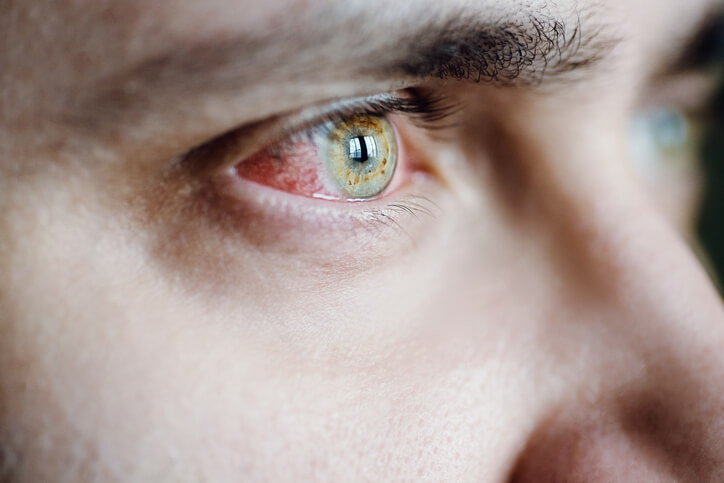What To Do If You Scratch Your Eye
A corneal abrasion, more commonly known as a scratched eye, is a small mark on the cornea. This is the clear, protective area of the eye. This common injury can occur during routine household tasks, yard work, or sports accidents. Oftentimes, a corneal abrasion occurs when dust, dirt, wood shavings, or even contact lenses are trapped beneath the eyelid. So, if you feel like you have something stuck in your eye, along with tearing and redness, then you may have scratched your eye. Besides being uncomfortable and an inconvenience, it’s also one of the more painful eye injuries. That being said, it’s important to seek immediate medical care for a corneal abrasion as it can become infected. Learn about the immediate steps you should take if you scratch your eye below.
What Causes a Corneal Abrasion?
The cornea is the top layer that covers the iris, the colored part of your eye. It also shields the pupil, the black circle in the middle of your eye. Because of its location, the cornea is often a vulnerable subject to debris and irritation from dust and particles. So, what causes a corneal abrasion exactly? Some common examples may include:

Many times your eye can become red, but that isn’t usually the first symptom. If you feel there is something in your eye, but you can’t see anything, you might have an abrasion. Contact your eye doctor.
- Poking your eye with a fingernail or makeup brush
- Contact with dirt, sand, or sawdust in the eye
- Getting chemicals in the eye
- Wearing ill-fitting or dirty contact lenses, over-wearing a lens
- Playing sports or other high-risk physical activity without safety eyewear
Signs and Symptoms
If you believe you have a corneal abrasion, you may experience some/all of the following symptoms:
- A gritty sensation in the eye
- Tearing and redness
- Pain when you open or close your eye
- Sensitivity to light
- Blurred vision
How to Treat a Scratched Eye
A minor corneal scratch should heal on its own in 1 to 3 days. However, it is important to consult an eye specialist promptly to determine the severity of the injury. In the meantime, immediately following an injury, prevent infection, and reduce pain with the following tasks:
1. BLINK rapidly as this can cause the eye to water and help flush out small bits of debris.
2. RINSE your eye with a sterile saline solution to flush out particles. You can use a bottle of saline or even a clean drinking glass.
3. WEAR sunglasses if your eye is sensitive to light because of the scratch. Sunglasses will lessen the symptoms while you heal.
And, What You Should Avoid
If you believe you have a corneal abrasion, never rub your eye or eyelid. It’s tempting, but it can make the abrasion much worse. Also, never attempt to extract debris from the eye with your fingers, cotton swabs, or other instruments. This may lead to further damage. Not to mention, the object could be gone even though you still feel as if something is in your eye. Finally, don’t wear your contact lenses while the eye is healing. This will slow the healing process and could cause complications or infection.
Prevention Methods
1. Wear safety goggles when working outside. For instance, using power tools, yard work, welding, and playing sports.
2. Follow the instructions regarding the proper use of your contact lenses to reduce the risk of scratches. This includes how long to wear them when they should be discarded, and the proper ways to clean the lens.
3. Keep your eyes properly lubricated with a dry eye treatment to increase tear flow. Dry eyes can increase the risk of corneal abrasions due to the lack of moisture in the eye.
Don’t Wait to Get an Eye Exam
In most instances, you should recover from a scratched eye without any long-term effects or eye damage. However, you should still see an eye doctor and get an eye exam. Your case may require antibiotic eye drops or ointment or lubricating eye drops to lessen the severity of symptoms. Keep in mind, more serious and deep scratches can cause infections, scars, and other vision problems. So, if you experience severe pain or are having any trouble seeing, go to the emergency room.
Share

